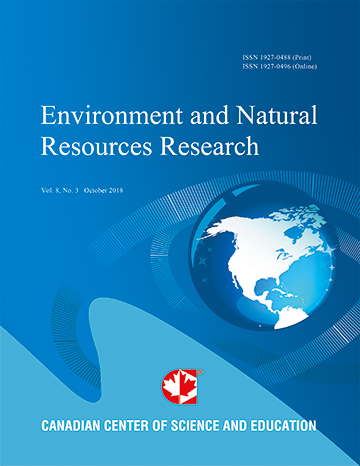Enhanced Cation Exchange Capacity and Exchangeable Bases in Sandy Soil Across Sudanian Savanna Agro-Ecosystem of Bondoukuy, Western Burkina Faso
- Moïse Yoni
- Issaka Senou
- Hassan B. Nacro
Abstract
The Cation Exchange Capacity (CEC) of soil represents its capacity to retain and exchange nutrient cations with plant roots. In Sudanian savannas, sandy soils are characterized by a dominance of coarse particles, which exhibit a low specific surface area and low cation retention capacity, in contrast to clayey soils. A low CEC restricts soil fertility and the capacity of the soil to sustainably provide essential nutrients to plants. It was hypothesized that the CEC of the topsoil in savannas of western Burkina Faso would demonstrate a significant increase due to substantial environmental changes during the fallow period. To test this hypothesis, a comparison was made between soil fertility in savannas and fallows, and that of cultivated plots, which were considered the control for this increase. A total of 15 plots were selected, with five plots allocated to each situation. The vegetation and soil of the plots were described in detail. Composite soil samples were taken from the 0-20 cm horizon. The soil analyses in the laboratory were conducted on several parameters, including texture, pH-H2O, pH-KCl, carbon, nitrogen, CEC and exchangeable bases. The results of the observations enabled the classification of the soils as tropical ferruginous soils with iron and manganese sesquioxides. The original materials indicate that the soil exhibits sandy properties. This was demonstrated by the granulometric study, which revealed that the soils under investigation exhibited an essentially sandy texture on the surface horizon. This results in a low retention capacity for exchangeable bases. The woody vegetation of the savannas exhibits a greater diversity of flora than that of the fallows. This has a significant impact on the enhancement of the CEC, due to the replenishment of the soil with plant debris of varying organic compositions. The overall pH is slightly acidic, with a range of 5.63 to 5.71. The soils of the savannas exhibit higher concentrations of carbon and nitrogen than those of the fallows and fields. The observation of chemical balances has enabled the identification of savannas as an environment conducive to optimal plant nutrition. Overall, the savannas enhance the CEC and exchangeable bases, despite the values being below the threshold recommended for tropical sandy soils. It is therefore necessary to implement measures to promote sustainable agriculture and enhance agricultural productivity in this region, where soil nutrients are naturally scarce.
- Full Text:
 PDF
PDF
- DOI:10.5539/enrr.v14n2p1
Journal Metrics
Google-based Impact Factor (2016): 6.22
h-index (November 2017): 12
i10-index (November 2017): 19
h5-index (November 2017): 11
h5-median (November 2017): 12
Index
Contact
- Emily LinEditorial Assistant
- enrr@ccsenet.org
